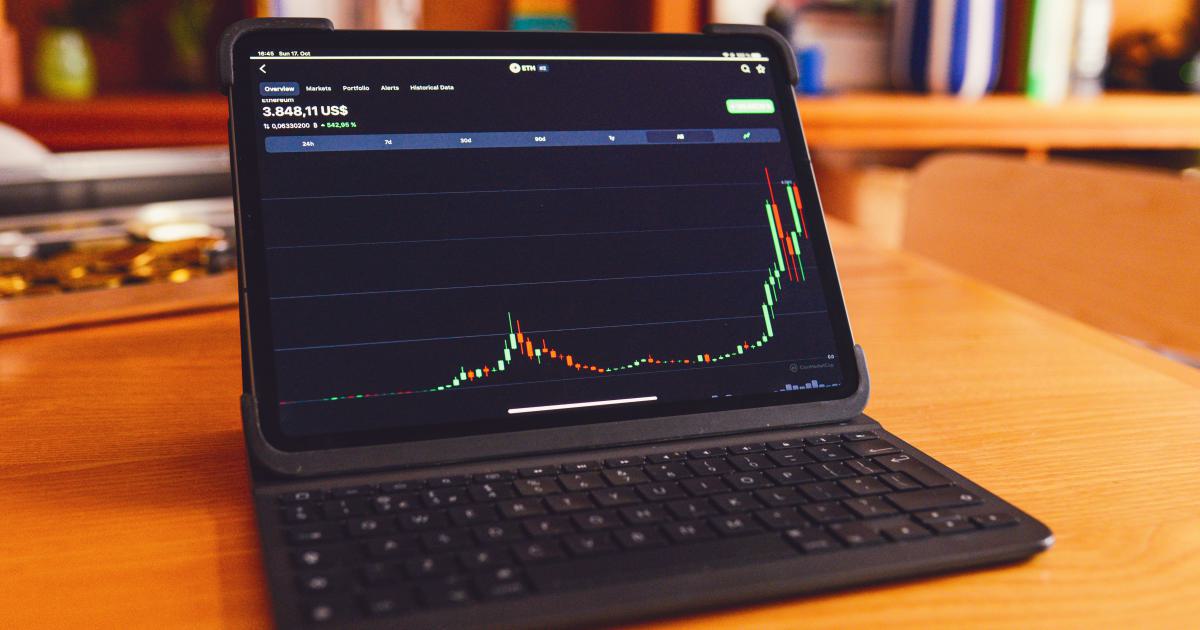Master the Mindset for Consistent Profits

In the world of trading, it is rare to see individuals who achieve long-term success without first mastering their own mindset. Successful traders understand that behind every profitable trade lies consistent trading performance analysis, rigorous emotional control, and a deep-seated belief in one’s own trading strategy. This article explores how adopting the right mindset can help you secure consistent profits, transform routine analyses into actionable insights, and ultimately, master the art of trading.
Trading is not just about charts, technical indicators, or market news; it is largely about psychology, discipline, and an unwavering commitment to the process of excellence. In this comprehensive guide, we will examine the factors that contribute to a winning mindset. We will delve into the benefits of consistent trading performance analysis, discuss techniques to manage emotions effectively, and provide actionable steps to fine-tune your trading approach. Whether you have been in the market for years or are just starting, understanding the mental and emotional components of trading can significantly elevate your performance.

Understanding the Psychology Behind Trading Success
Achieving consistent profits is not a direct outcome of well-executed trades alone. It requires a thoughtful and consistent trading performance analysis process that helps bridge the gap between theory and actual performance. The mind of a trader plays a crucial role in this journey, allowing for the assimilation of lessons learned, recognizing mistakes, and making the necessary adjustments to strategy.
The Role of a Trading Mindset
A disciplined trading mindset is built on self-awareness and the capacity to reflect on both your successes and failures. Many professional traders emphasize that the mental edge is as important as technical analysis or market knowledge. To cultivate this mental edge:
- Self-Assessment: Regularly review your trades using consistent trading performance analysis. This approach allows you to determine which decisions led to success and which mistakes can be avoided.
- Emotional Management: Trading often induces strong emotions such as fear, greed, and overconfidence. Recognizing these emotions early and managing them effectively is paramount for sustained success.
- Continuous Learning: The markets evolve, and so should your strategies. Stay up-to-date with market trends and adjust your plan based on both historical performance and new data.
By anchoring your trading strategy in these principles, you are more likely to develop resilience against market volatility and become adept at managing risk.
Building a Consistent Routine
Success in trading is often attributed to establishing and following a disciplined routine. A systematic approach to each trading day can establish habits that lead to incremental improvements over time. Some vital components of a practical trading routine include:
Preparation: Before the market opens, review market news, set up your trading charts, and analyze previous trading sessions.
Execution: Stick to a predetermined trading plan that includes risk management and clearly defined entry and exit points.
Review: At the end of each trading day, engage in consistent trading performance analysis, recording insights and potential areas for improvement.
Reflection: Weekly or monthly reflection sessions allow you to analyze your performance trends, understand recurring mistakes, and feel motivated to implement changes.
The systematic approach builds consistency and reduces impulsive decisions driven by short-term market fluctuations. In essence, establishing a daily trading routine reinforces discipline and gradually shapes your mindset for long-term success.
The Impact of Emotions on Trading
Emotional decision-making can disrupt even the best-formulated trading strategies. Traders often fall prey to self-doubt, overconfidence, or the fear of missing out (FOMO). Recognizing the psychological traps can help in mitigating their negative effects:
- Fear: Many traders experience fear after a series of losses. This fear may lead to premature exits from trades or avoidance of high-probability opportunities.
- Greed: On the other end of the spectrum, greed might prompt a trader to remain in profitable trades for too long, thereby risking reversals.
- Overconfidence: Excessive confidence can lead to overtrading or ignoring risk management protocols, which inevitably undermines long-term success.
To overcome these emotional hurdles, it is crucial to maintain a mindset that prioritizes rational analysis over impulsive emotional responses. Meditation, journaling, or even speaking with a trading coach can be effective tools in regulating emotions and reinforcing a steady course toward profitability.

Consistent Trading Performance Analysis: The Cornerstone of Success
One of the most potent tools in any trader’s arsenal is consistent trading performance analysis. This practice is fundamental in highlighting both strengths and weaknesses, enabling traders to refine their strategies over time.
Why Consistent Performance Analysis Matters
Without regular review and analysis, even high-potential strategies can fall victim to unchecked mistakes. Consistent trading performance analysis serves as a mirror, reflecting the realities of your trading habits. It provides insights into:
- Strategy Effectiveness: Determine which strategies are working and which need refinement.
- Risk Assessment: Review how much risk was assumed relative to the reward, and adjust positions accordingly.
- Behavioral Patterns: Identify emotional patterns or biases that consistently affect your decision-making process.
Instituting a regular review process means setting aside dedicated time for in-depth analysis. This practice not only enhances your trading accuracy but imbues a culture of accountability, where every trade is an opportunity to learn and grow.
Tools and Techniques for Analysis
There are several practical methods and tools that traders can use to conduct a thorough analysis. Here are some that can help:
Trading Journals: Maintain detailed logs of all trades including the reasoning behind each decision, the outcomes, and any subsequent feelings. Over time, a well-maintained journal becomes invaluable.
Analytical Software: Use quality trading platforms that offer advanced charting and performance tracking functionalities. This can include tracking drawdowns, win-loss ratios, and other key metrics.
Peer Reviews: Engage with fellow traders or join trading communities to gain insights from external feedback. Occasionally, an outsider’s perspective can provide the clarity needed to rectify recurring issues.
Implement these tools into your daily routine; remember, even the best strategy can benefit from regular fine-tuning. A culture of self-improvement not only advances your technical acumen but also reinforces your mental fortitude.
Linking Analysis with Strategy Evolution
An essential aspect of performance analysis is its role in evolving your trading strategy. This evolution is a continuous and iterative process. Each trade, whether successful or not, is a learning experience. The objective should be to adapt your approach based on empirical evidence rather than assumptions.
Steps to Evolve Your Strategy
- Record Every Trade: Document your trading decisions meticulously. Include details such as time, market conditions, and your emotional state.
- Identify Patterns: After accumulating data, analyze it for recurring themes. Are there particular market conditions where you perform better? Do certain triggers consistently lead to losses?
- Implement Changes Gradually: It is important not to overhaul your strategy overnight. Implement small, incremental changes and observe their impact.
- Review and Repeat: Make performance analysis an ongoing aspect of your strategy refinement. Revisiting your data regularly ensures that your strategy evolves in tandem with your skillset.
By linking consistent analysis to strategy evolution, you ensure that your trading approach remains dynamic and responsive to the ever-changing market environment.

Developing a Resilient Trading Mindset
A resilient trading mindset is one that withstands the inevitable ups and downs of the market. It is developed over time through deliberate practice, reflection, and learning from both failures and successes.
Embracing Losses as Learning Opportunities
One of the toughest lessons for any trader is accepting losses as part of the process. However, viewing losses strictly as failures can be detrimental to your mindset. Instead, consider them as data points or learning opportunities that inform your future decisions.
- Analyze Each Loss: After any loss, perform a retroactive analysis. What factors contributed to the outcome? Were there warning signs that you missed?
- Detach Emotion from Outcome: Emotional reactions to losses can skew your judgment. Maintaining a neutral perspective helps in understanding that losses are inherent and offer insights for improvement.
- Set Realistic Expectations: Understand that not every trade will be profitable. Managing your expectations means you are less likely to feel discouraged by setbacks, and you can instead focus on refining your technique.
Adopting this mindset transforms every loss into a valuable component of your trading education. It encourages resilience and fosters a more analytical approach to both success and failure.
Cultivating Discipline and Patience
In trading, discipline and patience are the twin pillars that hold up long-term success. Discipline ensures that you stick to your trading plan, while patience allows you to wait for the right opportunities rather than forcing trades.
Strategies to Enhance Discipline
- Develop a Written Trading Plan: A written plan that outlines your trading strategy, risk management rules, and performance review processes will keep you anchored during periods of uncertainty.
- Set Clear Goals: Define both short-term and long-term objectives. This helps keep your focus intact and allows you to measure progress systematically.
- Use Automation Tools: For traders who struggle with the emotional intensity of decision-making, automation tools, such as stop losses and take profit orders, can help minimize impulsivity.
Exercises to Boost Patience
- Mindfulness Meditation: Regular mindfulness practices can help manage the stress and anxiety that often disrupt a trader’s patience.
- Visualization Techniques: Visualizing successful outcomes can reinforce confidence and foster a calm, deliberate approach.
- Time Blocking: Allocate specific time periods for analysis, execution, and review. This structure helps in cultivating a methodical, patient approach to the trading day.
By merging discipline with patience, you create a reaction system that relies on reasoned judgment rather than emotional impulses. Over time, this methodology becomes second nature and further cements a resilient trading mindset.
Actionable Solutions for Consistent Profitability in Trading
Moving from theory to application, here are several actionable strategies designed to help traders consistently secure profits while maintaining a robust and positive mindset.
Step 1: Establish Your Trading Plan
A comprehensive trading plan is the blueprint for consistent success. Your plan should encompass market analysis techniques, risk management strategies, entry and exit rules, and provisions for regular performance analysis. Writing down your plan makes it tangible and easier to adhere to under pressure.
Key Elements to Include:
- Risk/Reward Ratio: Define how much you are willing to risk compared to the potential reward.
- Trading Hours: Specify the time frames or market conditions under which you will trade.
- Review Schedule: Set a schedule for regular, methodical consistent trading performance analysis.
- Contingency Measures: Plan for unexpected market movements or personal emotional shifts.
Step 2: Focus on Continuous Learning
The markets are ever-evolving, and so should your strategies. Embrace continuous education through books, webinars, online courses, and mentorship programs. Engaging with a community of traders can also reinforce your learning and provide new perspectives.
Recommended Learning Methods:
- Structured Courses: Invest in reputable trading courses that cover both technical analysis and trading psychology.
- Mentorship: Work with experienced traders who can provide personalized feedback and insights.
- Peer Groups: Join online forums or local trading groups to exchange ideas and discuss strategies.
- Case Studies: Regularly review real-world trading scenarios and learn from the experiences of others.
Step 3: Utilize Technology to Your Advantage
Modern technology can be a game-changer in performing consistent trading performance analysis. Leverage advanced charting software, automated trading systems, and data analytics tools to gather insights quickly and accurately.
Tools to Consider:
- Trading Platforms: Use platforms that offer comprehensive charting tools and historical data analysis.
- Mobile Apps: Quick access to your trading accounts on mobile devices can help you manage trades on the go.
- Analytics Software: Employ data visualization and performance tracking software to uncover patterns and trends in your trading history.
Step 4: Regular Mental Conditioning
Just as athletes condition their bodies for performance, traders must condition their minds for the rigors of the market. Incorporate mental conditioning techniques such as meditation, visualization, and even physical exercise to maintain clarity and focus.
Practical Mental Conditioning Techniques:
- Morning Routines: Begin each trading day with a routine that includes a brief review of goals, a few minutes of meditation, and a reminder of your trading plan.
- Journaling: Keep a daily journal that captures not only your trades but also your emotional state and thought process. Over time, this record is invaluable in identifying recurring behavioral patterns.
- Periodic Breaks: Avoid burnout by taking regular breaks throughout your trading day, allowing your mind to reset and remain sharp.
Step 5: Monitor and Adapt
Finally, remember that the market is in a constant state of flux. What worked yesterday may not work tomorrow. Adjust your strategy dynamically by integrating feedback from your consistent trading performance analysis into your daily operations.
Developing Adaptive Strategies:
- Regular Meetings: Schedule weekly or monthly strategy review sessions to assess performance and implement necessary adjustments.
- Feedback Loop: Incorporate feedback from various sources—personal journals, analytics tools, and peer reviews—to refine your strategy continuously.
- Trial and Error: Do not be afraid to experiment with small changes in your tactics. Every trade is an opportunity to test and improve your methods.
By following these actionable steps, you can forge a path towards consistent profitability, ensuring that every trade contributes to the broader, long-term evolution of your trading career.

Case Studies & Real-World Examples
To truly appreciate the impact of the right mindset on trading, it is important to examine real-world examples where discipline, analysis, and emotion management have turned potential pitfalls into benchmarks of success.
Case Study 1: The Transformation of a Disciplined Trader
Consider the journey of John, a trader who struggled with erratic performance early in his career. Initially, John’s trading strategy was riddled with impulsive decisions driven by fear and overconfidence. His results fluctuated wildly until he adopted a rigorous routine of consistent trading performance analysis. By documenting every trade and categorizing each emotional response, John was able to recognize patterns that led to significant losses. With this insight, he reformed his trading plan, set strict entry and exit rules, and started meditating daily to manage his emotions. Over time, John’s approach shifted dramatically. Trades that had been resultantly erratic became systematically profitable, and John began to recover his losses gradually. Today, his disciplined strategy and continuous adaptation are a case study in turning a weak trading mentality into a consistent profit machine.
Case Study 2: Overcoming Psychological Barriers
Sarah, another seasoned trader, once found herself trapped by the psychological barriers of fear and regret. Each loss weighed heavily on her psyche, and the subsequent anxiety led to a cycle of overtrading in a desperate attempt to reclaim sunk costs. Instead of making calculated decisions, Sarah’s trades were reactive rather than proactive. After participating in a workshop on trading psychology and engaging in consistent trading performance analysis, Sarah documented her emotional highs and lows. By identifying that her losses were more a product of panic than poor strategy, she learned to pause, breathe, and trust her pre-established trading plan. Within months, the quality of her trades improved markedly. Sarah’s renewed focus on mental conditioning, combined with a methodical review process, allowed her to overcome psychological setbacks and secure a steadier path to profitability.
Lessons from the Examples
These case studies illustrate that regardless of experience level, every trader benefits from a structured approach to refining their mindset. The core lessons include:
- The importance of detailed self-analysis to identify both strengths and weaknesses.
- Embracing losses as learning opportunities rather than stumbling blocks.
- Prioritizing mental conditioning alongside traditional technical strategies.
- Recognizing that success in trading is a journey of continuous improvement rather than a series of isolated winning trades.
Incorporating these lessons into your trading approach can shift the focus from short-term gains to long-term, consistent profits.
Strategies to Sustain a Growth-Oriented Mindset
A robust trading mindset is nurtured over time through continual learning, adaptation, and self-compassion. Sustaining such a mindset is essential to remain competitive and resilient in the dynamic world of trading.
Adopting a Long-Term Perspective
One of the fundamental traits of successful traders is the ability to view the market through a long-term lens. Instead of getting caught up in daily fluctuations, focus on the broader trend. This perspective not only helps in reducing the emotional roller coaster of trading but also keeps your analysis aligned with overarching market dynamics.
- Long-Term Goals: Set realistic long-term performance targets that take into account cumulative gains and risk management.
- Perspective Shifts: Learn to accept temporary setbacks as part of the larger journey rather than catastrophic failures.
- Patience: Cultivate patience in your trading decisions. Recognize that consistency is achieved through a series of small, well-executed trades rather than dramatic moves.
Emphasizing Self-Improvement
The journey to mastering your trading mindset is a path of continuous self-improvement. Here are actionable strategies to help maintain this mindset:
- Ongoing Education: Attend seminars, read the latest market analysis, and keep refining your analytical skills. The more market insights you gain, the more confident and resilient you become.
- Feedback and Mentorship: Regularly seek constructive feedback from mentors or peers. Constructive criticism provides a roadmap for areas that need further development.
- Celebrate Progress: Acknowledge and celebrate small victories: meeting a weekly goal, successfully executing a trade plan, or maintaining composure during turbulent markets. These successes reinforce positive behavior and boost overall confidence.
- Emotional Check-ins: Periodically assess your emotional well-being regarding trading. Proactively address any signs of burnout or stress through physical exercise, meditation, or professional counseling if needed.
Best Practices for Mental Conditioning
To further solidify your growth-oriented mindset, consider these best practices:
Daily Journaling: Record insights, challenges, and areas of improvement each day. A disciplined journaling practice can reveal patterns that might otherwise be overlooked.
Mindfulness Training: Regular mindfulness practices such as guided meditation or breathing exercises can significantly reduce stress and enhance focus.
Visualization: Spend a few minutes each day visualizing your success. Picture yourself successfully executing trades, calmly navigating market shifts, and steadily building your profit.
Structured Downtime: Ensure you schedule downtime that allows your mind to rejuvenate. Balance is key to long-term success, and a well-rested trader is better equipped to handle market challenges.
Implementing a Feedback Loop for Continuous Improvement
Developing an effective feedback loop is vital for continuous improvement. It ensures that each trade or trading day contributes to the evolution of your overall strategy.
- Review Sessions: Establish regular review sessions (weekly or monthly) to analyze your trading journal and statistics. Ask yourself what worked, what didn’t, and what changes can be made.
- Benchmarking: Use previous performance metrics as a baseline and aim for incremental improvement. Benchmarking against past performance reduces the likelihood of complacency.
- Actionable Adjustments: Translate your analysis into precise, actionable steps. For example, if you notice that impulsive decisions are harming profitability, implement a “wait time” rule before executing any trade.
By integrating these practices, you nurture a dynamic and resilient mindset that continuously evolves. This proactive approach not only minimizes emotional pitfalls but also optimizes your strategy for consistent profitability over the long run.
Conclusion: The Journey to Profitable Trading
Mastering the mindset for consistent profits is an ongoing journey that blends technical analysis with mental discipline. It involves developing a keen sense of self-awareness, engaging in consistent trading performance analysis, and embracing both successes and setbacks as integral to growth. By following a structured plan, investing in continuous learning, and fostering a resilient mindset, traders can navigate the complexities of the market with confidence and discipline.
Remember, every loss is an opportunity for learning, and every success reinforces the practices that contributed to it. In the final analysis, trading is as much a mental journey as it is a technical one. Commit to this journey, and over time, you will find that sustained and consistent profits become not just possible, but the natural outcome of your disciplined and focused approach.
Your trading journey is a testament to your commitment to growth. Each step—from analyzing past performance to executing structured trades—contributes to building a robust system that is adaptable, resilient, and consistently profitable. Embrace the challenge, refine your approach continuously, and watch as your trading mindset transforms your outcomes in this exciting, ever-changing world of finance.
Unlock Your Trading Potential with Edgewonk
Struggling to consistently achieve profitable trades? Edgewonk's cutting-edge analytics empower you to analyze your performance and refine your strategies.
Our advanced trading journal software provides detailed insights, psychological analysis, and personalized recommendations tailored to your unique trading style.
Shion Tanaka
64 posts written




